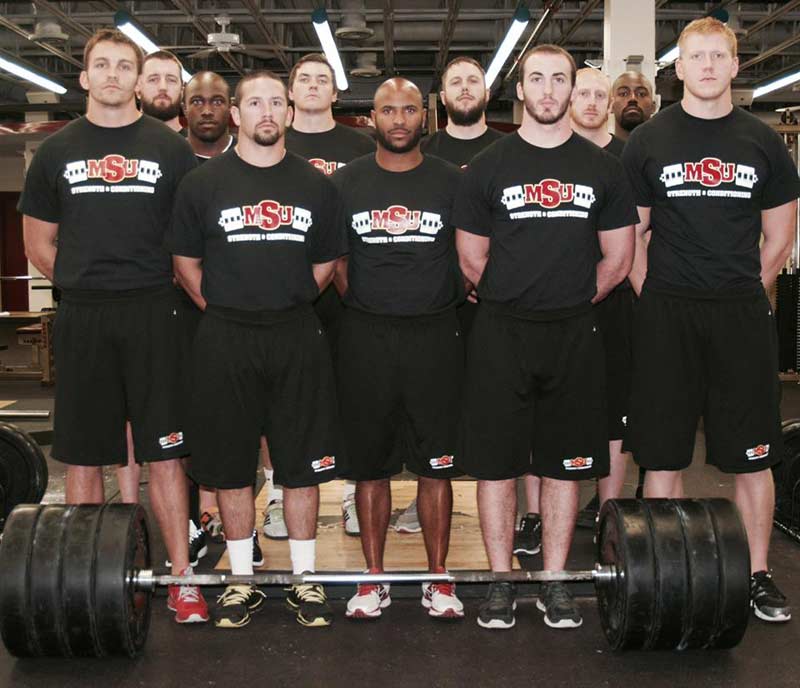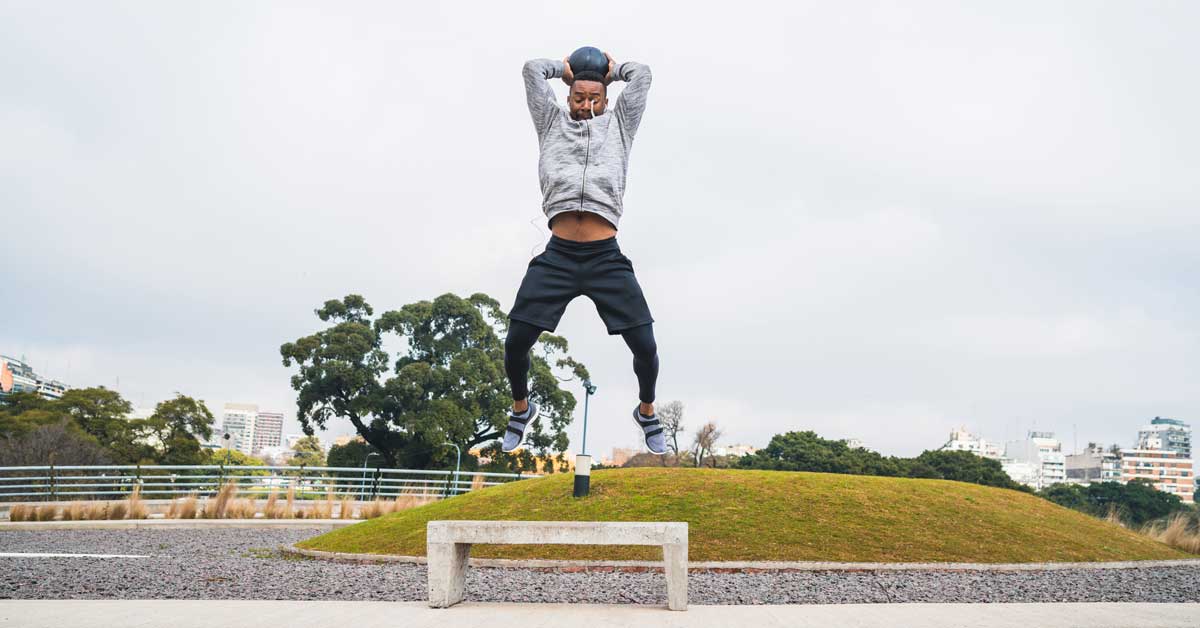Anyone who has taken biomechanics courses in college and survived to tell the tale understands how the academic world looks at human movement. It’s taught that the body consists of a series of muscles, connective tissues, and bones: this is a system of levers and pulleys creating locomotion.
While crunching complicated equations, most of us begin to compartmentalize action based on the surrounding muscle groups. And why wouldn’t we? The entire strength and conditioning field revolves around strengthening particular muscle groups. We have machines for biceps and entire days dedicated to legs. The internet is full of gurus whose Instagram handles include the words knee, hamstring, glute, etc. Our field mocks bodybuilders for their training methodologies and then applies the same kind of muscle idolization in its training.
So, how did this happen? To answer that, travel with me back to 2016, when I finished my master’s thesis (see the abstract for “The Impact of Three Different Forms of Warm Up on Performance”).

From the Playing Field to Academia
Before I conducted my research, I spent the year coaching athletes in the strength and conditioning program at Midwestern State University in Wichita Falls, Texas. Having played football and powerlifted for my university, I already knew what it was like to do the training. Like any new coach and grad student, I ate up the new nuggets of knowledge I gained. The purpose of my thesis was to check how different forms of warm-ups could positively or negatively affect power performance. I looked at the differences between the impact of dynamic warm-ups, static stretches, and foam rolling on peak power and range of motion.
At this time, there was a great deal of debate about whether foam rollers were worth the energy for a sports program. Old-school coaches looked at it as a waste of time, stating that rolling on a piece of plastic was a horrible way to start a workout. On the opposite side of the spectrum, new age gurus claimed a simple piece of foam could break down scar tissue within the muscle. (Fun fact: it cannot). For more than a year, I had started every session with rolling out, and I believed it improved how well I moved during my workout. This made me want to investigate two things:
- Does myofascial release (foam rolling) have any positive or negative impact on training and performance?
- If there is a positive impact, how does it work?
To answer the first question simply—foam rolling did seem to affect peak power or improve range of motion. To answer the second question complexly—a lot happens when pressure is applied to muscle and its connective tissue.
So, like any good grad student, I began researching how foam rolling affects the body and why it impacts performance. After a few weeks down the rabbit hole, I looked at myofascial release therapy and its effect on fascia. At this point in my career, I had compartmentalized the body into more than 600 different muscle groups. If your quad hurts, you need to fix your quad. If your shoulder blade “pinches,” you need to fix the muscles around your shoulder blade. After all, muscles are the main character in this movie.
Apparently not. I learned that our bodies are covered in an intertwining organ that is full of sensory receptors that can affect everything. From “tightness” to how the body can transfer energy between limbs, myofascia played a huge role. I had spent years thinking of the body as this series of segmented levers. All school taught me about fascia was that it covers our muscles—that was about it. It was during my own research that I learned the positive effect of foam rolling comes partly from the pressure feedback within the myofascia. This creates a cascade of events that not only improve the range of motion, but also the power an athlete can produce.
My light bulb moment: If the function of fascia can improve from rolling out, then emphasizing it in training surely would enhance performance, says @endunamoo_sc. Share on XI had never considered the impact of how fascia can aid (or impair) movement. LIGHT BULB.
If the function of fascia can improve from rolling out, then emphasizing it in training surely would enhance performance! This organ doesn’t stop and restart at each bone like muscles; rather, it covers EVERYTHING. This is why you can stretch or massage the glute and relieve shoulder blade tension. Or how you can have someone who is weight room weak produce massive amounts of power and speed on the field. Skinny pitchers and lanky basketball players can do things that no elite-level powerlifter could dream of. This “discovery” helped me realize two huge concepts:
- Anytime an athlete trains, we should organize sessions, microcycles, and macrocycles around more than just traditional strength training.
- What made me into a great powerlifter might have been the same thing that made me such an injury-prone and average football player.
So, the big question is: “how do we train fascia?” The truth is that almost everything you do in sports and the weight room will train your fascia. Now, if you stop reading at that line, you will miss out on the UGLY truth of fascia: How you train affects your fascia.
Fascia is an interesting organ because of its adaptability. It can act like a sail, catching and sharing power across the body using mechano and chemoreceptors littered throughout. Not only does it adapt to stress in the form of normal loading, but it also can adapt specifically to the velocity at which it loads.1
Fascia is an interesting organ because of its adaptability…Not only does it adapt to stress in the form of normal loading, but it can also adapt specifically to the velocity at which it loads. Share on XIn other words, if you only move slow, you create slow fascia. If you move in one pattern, your fascia will create lines of efficiency in these directions. The inverse is true as well. And unlike muscle, which can have growth and neurological adaptations in only weeks, fascia takes months to change. This becomes a problem when we neglect higher velocity training for predominantly heavy weight-based workouts.
During the COVID-19 lockdowns of 2020, athletes across many sports (except for a few basketball players in Disneyland) found themselves trapped in their houses and apartments. Gyms were closed, and nobody knew if it was safe to interact with each other in public. We were a community of individuals doing our best to get by. This resulted in elite-level athletes performing bootcamp-style workouts in their living rooms. Unfortunately, this predicament lasted longer than six weeks for most people. They went from sprinting, jumping, and moving at high speeds many times a week to doing nothing at all for months in a row.
Finally, once competitive athletics resumed, sports like football gave their top performers only a few short weeks to get back to “game speed.” This was when we saw the largest number of soft tissue injuries ever in the NFL. Between hamstrings, Achilles, and ACLs, some of the league’s best athletes were out for the year.2 Although there isn’t a single source of blame, low-velocity workouts done for months with only a short time allowed for correction seems to just scream that it’s one of the culprits.
This is where my personal history comes into play—I was a perfect soldier of a football player. If you asked me to run through a brick wall, I would. No questions asked. My high school coach told me that if I wanted to be a great at football, I needed to do power cleans and squats—so I did. In college, I was the strongest in my class, so I always lifted with the upperclassmen. I enjoyed that title, and my strength coaches praised me for my weight room abilities. I got strong, I improved my vertical, and I got decently fast—but I was always getting hurt.
I also struggled with certain athletic traits that I knew I should be better at. I could dunk from a standing position, but barely jumped higher with an approach. I was a great 10-yard sprinter but was inconsistent with 40-yard distances. What I (and many coaches today) failed to realize was that I had spent so much time focused on muscle-specific strength training that I had neglected the fascial side of human performance: the athletic side, if you will.
How to Train Fascia
Go to any AAU basketball tournament and you will see some of the most athletic movements performed by the most gangly of individuals. A combination of explosive dunks, extreme footwork, and powerful sprints are done by “weight room weak” individuals. This has to make the most seasoned strength coach pause in their tracks when building the best programs for their athletes. Break basketball down into its base components, and it’s just jumping, sprinting, decelerating, and throwing. Because of the nature of the sport, there are more than 60 jumps per game and dozens of speed changes.3

If that is all it takes to create astounding athletes, why don’t we do more of that in the weight room?
In NO WAY am I saying that we should neglect the many benefits of strength training in the weight room. The sad truth, though, is that many high school and college coaches have turned the weight room into powerlifting, Olympic lifting, and body building centric zones. I believe that strength is the foundation to performance enhancement, but it, in and of itself, does not create the most athletic of individuals. If you’ve ever seen Usain Bolt’s weight room training, it will haunt your nightmares.
The way Bolt trained in the weight room likely had nothing to do with his world-record success. So, let’s look past the barbells, bands, and squat racks to determine what we can do for our athletes to create positive fascial adaptations. Many coaches already incorporate these things, but as the “garnish” of their workouts. I argue that we should find ways to make these the steak and potatoes of the hour. Squats, presses, and pulls will still be integral in building great athletes, but we need more of these four qualities in each session:
1. Throw Things
Throwing medicine balls is not just a baseball player’s job anymore. The way that the body has to transfer force from the ankle to the knee, to the hips, to the spine, to the shoulder, to the arm, and out of the hand, maximizes the fascial “sail.” Our facility has anecdotally used medicine ball throws with our varsity football players before sprinting with great return. The better the body is at transferring energy throughout, the more it will be able to handle energy during athletic performance.
Video 1. Athletes play med ball volleyball to further build explosiveness at the tail end of a summer development program with Endunamoo Strength & Conditioning.
2. Jump, Sprint, Land
Jumping and sprinting are some of the most primal of movements when it comes to being human. Although these movements can be very force dominant, you cannot deny the velocity-explicit components. A max effort jump will utilize the entire body to produce force both vertically and horizontally.
The more in tune with fascial transfer an athlete is, the better they seem to perform things like continuous jumps. The strongest powerlifter is NOT the fastest sprinter for many reasons, but one of them is the inability to rapidly transfer force across the body. Sprint fast and sprint often to convert muscular strength into athletic strength. Sports play is full of rapid eccentrics, but if I walked into any random high school or college weight room, I would most likely see nothing but tempo-controlled lifts. Rapid eccentric movements seem to excite more eccentric overload and induce greater stretch shortening cycles.4 Exercises such as depth drops, depth jumps, and even “rapid eccentric” weight room exercises will benefit most athletes.
Video 2. Advanced phases of a box jump progression targeting improved ground contact times.
3. Train Across the Body
If you want to understand how fascia connects our body, just watch sports. We instinctively know to apply forces across the body from one foot to the opposite hand, says @endunamoo_sc. Share on XIf you want to understand how fascia connects our body, just watch sports. A pitcher plants with their left foot before throwing from their right hand. A sprinter simultaneously drives the opposite knee and hand while running. A basketball player leaps off their left foot while winding up their right hand for a dunk. We instinctively know to apply forces across the body from one foot to the opposite hand.
Adding in training that works across the body can build these already natural fascial pathways. Things like landmine movements with rotation, single limb dynamic movements, and even trunk rotating exercises should be added at the appropriate times and intensities.
Video 3. Baseball players working cross chops and suspension rows to target the trunk muscles responsible for rotation/counter-rotation and scapular control.
4. Train Along Lines
I am still surprised at how little people know about fascial lines. Granted, I researched fascia in grad school and had no clue this concept even existed. Many of the best coaches in today’s industry have concurred that the body contains “lines” that we can train to maximize. I’ve mentioned different exercises above that work across the body, but we cannot neglect these lines:
- Front line.
- Superficial back line.
- Lateral line.
- Spiral line.
- Back functional line.
- Front functional line.
Adding Intent to Common Practice
This sounds so simple, and most experienced strength coaches will scoff “I already do this.”
So did I.
It’s only when the intent behind these core principles matches our weight training intensity that the results are maximized. We program percentages and rep schemes and treat them like gospel, but things like plyometrics are usually an afterthought. When you look at your old workouts, how often are your athletes performing max effort or measured jumps? Does most of your running involve full speed trials or is it predominantly conditioning? Do your kids perform intentional deceleration work, or do you let “the game” take care of that?
If your goal is to build a powerlifter, then continue to neglect the athletic side of training. But if you want a team of elite athletes, you’re going to have to train them like elite athletes. Share on XIf your goal is to build a powerlifter, then continue to neglect the athletic side of training. But if you want a team of elite athletes, you’re going to have to train them like elite athletes.
Since you’re here…
…we have a small favor to ask. More people are reading SimpliFaster than ever, and each week we bring you compelling content from coaches, sport scientists, and physiotherapists who are devoted to building better athletes. Please take a moment to share the articles on social media, engage the authors with questions and comments below, and link to articles when appropriate if you have a blog or participate on forums of related topics. — SF
References
1.Myers, Thomas. Anatomy Trains. Churchill Livingstone: 2001.
2. Blumenthal, D. “NFL injury rate rises in 2020 as culprits range from Covid to turf.” Sportico.com. January 29, 2021. Retrieved from https://www.sportico.com/leagues/football/2021/nfl-injury-rate-rise-2020-1234621442/.
3. McInnes, S.E., Carlson, J.S., Jones, C.J. and McKenna, M.J. “The physiological load imposed on basketball players during competition.” Journal of Sports Sciences. 1995;13(5):387-397.
4. Hernandez J. L, Sabido R., and Blazevich A.J. “High-speed stretch-shortening cycle exercises as a strategy to provide eccentric overload during resistance training.” Scandinavian Journal of Medicine and Science in Sports. September 2021.





